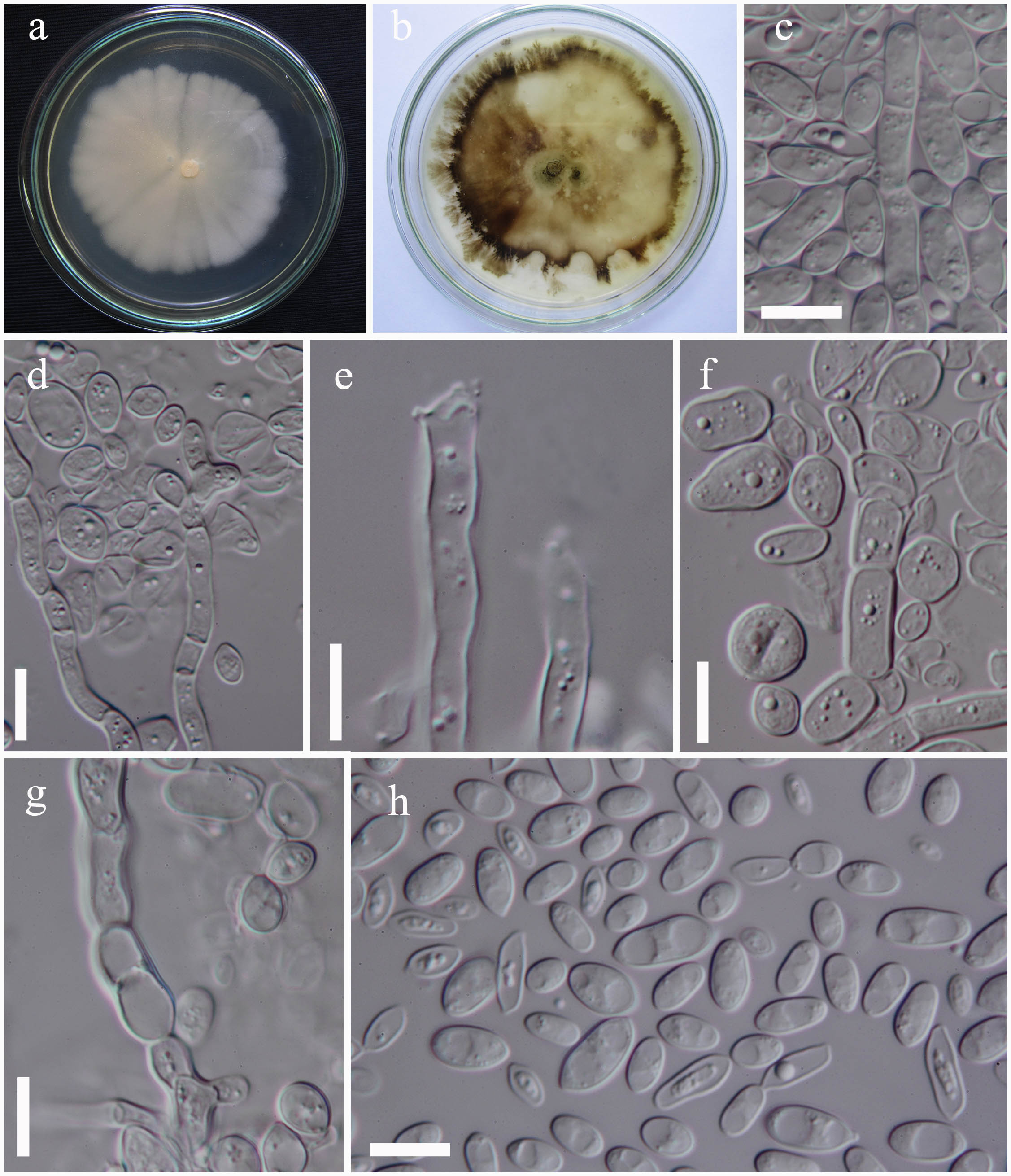Aureobasidium pullulans (de Bary) G. Arnaud var. pullulans-Annales École Nat. Agric. Montpellier 16: 39, 1918.
Index Fungorum number: IF 101771; Facesoffungi number: FoF 00099
For other synonyms: see Index Fungorum
Vegetative hyphae hyaline, transversely septate, smooth, sometimes becoming brown to dark brown when getting older, smooth, thin-walled, 2−9 μm wide, transversely septate. Conidiogenous cells undifferentiated, intercalary or terminal on hyaline hyphae or arising as short lateral branches. Conidia 5.5−16 × 3−6 µm (x̄ = 9.2 × 4.2 µm, n = 60), produced synchronously in dense groups from small denticles, and also formed percurrently on short lateral denticles, hyaline sometimes becoming brown, ellipsoidal, aseptate, smooth. Endoconidia are produced by an intercalary cells.
Cultural characteristics − Colonies on PDA at 25 ºC attaining about 70−80 mm diam after 14 days, appearing smooth and slimy due to abundant sporulation, pinkish white. Within the first 6 weeks, colonies filamentous and thereafter develop white, setae-like mycelia then turning to brown first and then black at the irregular margin.
Material examined − THAILAND, Chiang Rai, on PDA, 12 Aprial 2013 (MFLUCC 14−0288, ICMP 20350).
Fig. 1 Aureobasidium pullulans (MFLUCC 14−0288). a Culture on PDA incubated for a. 2 weeks b. 7 weeks at 25 ºC. c-g Conidiophores and conidiogenesis. h Conidia. Scale bars: c-h = 10 μm.

